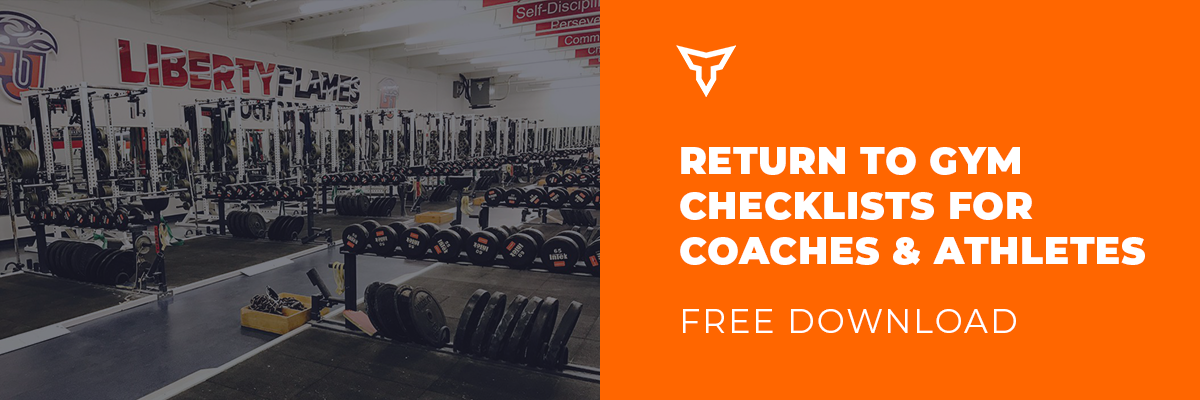As of May 1, 2020 the conversation of reopening many states has at least begun and in some cases has already been enacted upon. As we close in on a return to training in our local fitness or performance centers we have been provided position statements from oversight organizations on how best to reopen facilities. We have general advice from government agencies as to how best to protect ourselves daily. But specific recommendations for users of training facilities are lacking.
Currently, in the United States, there are no safety laws surrounding the COVID-19 pandemic. There are, as previously stated, guidelines and recommendations. What is the difference?
- Guidelines and recommendations are statements or plans by which to determine a course of action. By definition they are never mandatory nor enforceable by law.
- Laws, on the other hand, are rules that are enforced through social institutions. They are in place to govern behavior.
What does this mean for you? Simply, that there will be no standard approach to reopening during COVID-19 and that, as a consumer (a coach or athlete), you should be educated on best practices.
Most importantly, you should be educated on how to protect YOURSELF AND YOUR LOVED ONES as a gym-goer; regardless if you are a coach or athlete.
I am hopeful what follows will contextualize the many general statements provided and serve to assist you in your planning and response effort. This article is not an attempt to capture all state, county, city/town, or organizational nuances, classify differences among all fitness environments (i.e. private, scholastic, sporting organization, studios, etc.), or offer recommendations based upon goods or services provided (i.e. food service, dormitory access, group exercise, etc.).
It is simply a guide to daily practice for anyone who uses the training facility.
Facilities Guides
The authority figures when it comes to standards and guidelines for fitness facilities are the American College of Sports Medicine (ACSM) and the International Health, Racquet, and Sportsclub Association (IHRSA). In the collegiate system, coaches look to the National Strength and Conditioning Association (NSCA) and in Olympic sport the United States Olympic and Paralympic Committee (USOPC).
All have published standards or position statements for cleanliness and sanitation of facilities that should be adhered to at all times but in particular during the COVID-19 global pandemic. Should you desire to read them, here they are:
ACSM:
NSCA:
- COVID-19: NSCA Guidance on Safe Return to Training for Athletes
- COVID-19 Return to Training: Guidance on Safe Return to training for Athletes
- NSCA Safety Checklist for Exercise Facility and Equipment Maintenance
IHRSA:
USOPC:
If you are an athlete, I recommend you read my recent article A Guide for Gym Goers Amid COVID-19. Once read, you will have a strong grasp of what to expect from your local gym or performance center.
Your Guide
Now that you have an understanding of the organizational considerations, we need to probe deeper into what you can and should be doing to protect yourself at work or during training. The list below is adapted from the hospital setting and is designed to reduce the risk to you, your loved ones, and those with whom you may come into contact. It is important to understand that these gym safety tips do not eliminate the risk from COVID-19 or any other disease but can reduce the risk significantly.
Select the respective hyperlink if you would like to download a sharable copy for your athletes or yourself or your staff.
BEFORE THE GYM:
| All |
|
| Coaches |
|
| Athletes |
|
AT THE GYM:
| All |
|
| Coaches |
|
| Athletes |
|
AFTER THE GYM:
| All |
|
| Coaches |
|
| Athletes |
|
It is very important that you continue to train; it’s a big part of performance and wellness. As coaches, we need to continue to coach, both for our mental well-being but also because our athletes are counting on us. To do this we need to stay healthy!
As we look to reopen, stay safe, and keep grinding!
Subscribe to our blog
Subscribe to receive the latest blog posts to your inbox every week.
Related posts

5 Mistakes I Made Opening and Operating My First Gym

Prepped or Panicked: Which January Gym Owner Will You Be?


